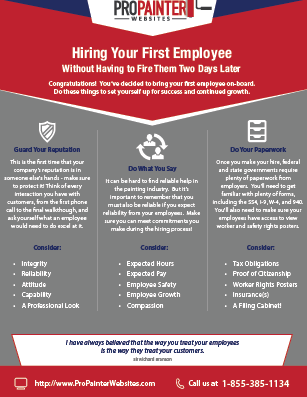Seasonal Factors To Consider For Industrial Exterior Painting: What You Required To Know
Seasonal Factors To Consider For Industrial Exterior Painting: What You Required To Know
Blog Article
Web Content Created By-Korsholm Chaney
When you're planning an industrial external paint job, seasonal elements can make or damage your results. You'll intend to consider exactly how temperature level and moisture impact paint application and drying out times. Selecting the right season can ensure your paint sticks appropriately and lasts longer. Yet which seasons are genuinely the best for this type of work? Let's discover the key elements that can impact your task's success.
The Impact of Temperature Level on Paint Application
When you're planning a commercial outside painting project, the temperature level can considerably affect exactly how well the paint adheres and dries.
Ideally, you wish to repaint when temperatures range in between 50 ° F and 85 ° F. If it's also cool, the paint may not heal properly, resulting in concerns like peeling off or fracturing.
On how long will paint last in a can , if it's also warm, the paint can dry out also swiftly, avoiding correct bond and leading to an uneven finish.
You should additionally take into consideration the moment of day; morning or late afternoon offers cooler temperature levels, which can be more favorable.
Always inspect the manufacturer's suggestions for the details paint you're making use of, as they commonly give assistance on the suitable temperature level variety for optimal outcomes.
Moisture and Its Impact on Drying Times
Temperature isn't the only environmental aspect that influences your commercial outside painting job; moisture plays a significant function also. High humidity degrees can decrease drying out times drastically, impacting the general quality of your paint work.
When the air is saturated with dampness, the paint takes longer to heal, which can bring about problems like poor bond and a greater threat of mold development. If see this site on a particularly humid day, be prepared for extensive wait times in between coats.
It's vital to monitor regional weather conditions and strategy appropriately. Ideally, aim for moisture levels in between 40% and 70% for optimal drying.
Maintaining these consider mind ensures your project stays on track and provides a long-term coating.
Best Seasons for Commercial Exterior Painting Projects
What's the very best time of year for your business external painting tasks?
Springtime and early loss are generally your best choices. During these periods, temperatures are light, and humidity degrees are commonly lower, developing perfect problems for paint application and drying out.
Stay clear of summer's intense heat, which can cause paint to completely dry as well rapidly, leading to bad adhesion and coating. In a similar way, wintertime's cold temperature levels can hinder appropriate drying out and curing, risking the longevity of your paint work.
Aim for days with temperature levels in between 50 ° F and 85 ° F for optimal outcomes. Keep in mind to check the neighborhood weather prediction for rainfall, as damp problems can destroy your project.
Planning around these aspects guarantees your painting job runs efficiently and lasts longer.
Final thought
To conclude, planning your industrial outside paint jobs around seasonal considerations can make a considerable difference in the result. By scheduling work during the ideal temperature levels and humidity levels, you'll guarantee better bond and drying times. Remember to keep an eye on neighborhood weather prediction and choose the correct time of year-- spring and very early autumn are your best bets. Taking these actions will certainly help you accomplish a sturdy and specialist finish that lasts.
